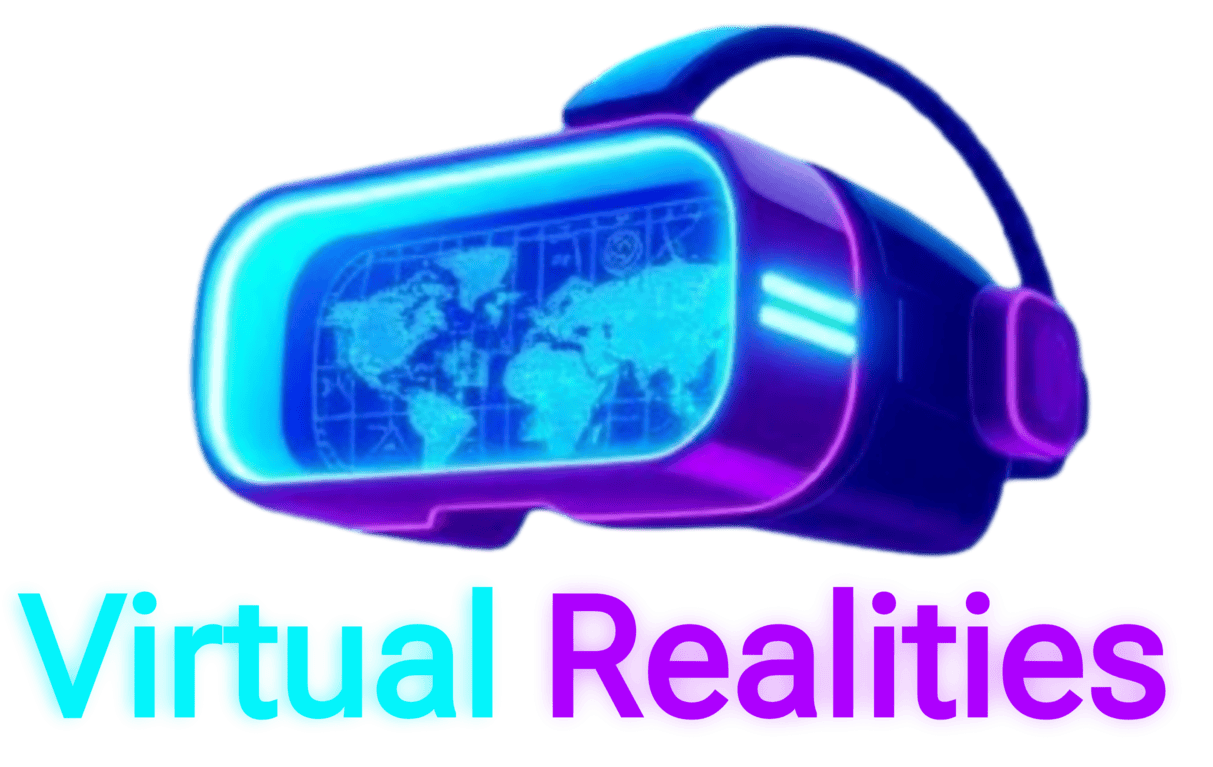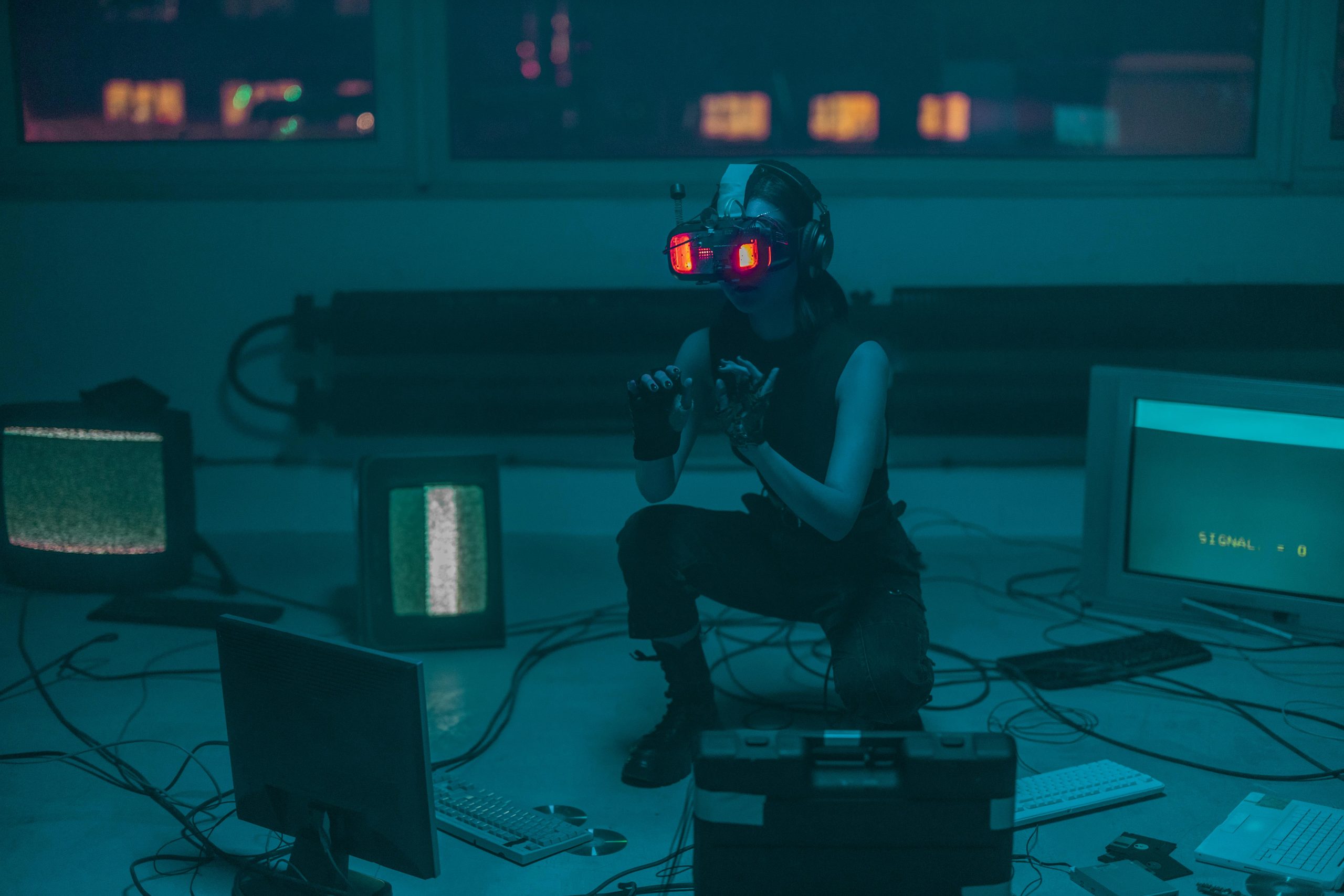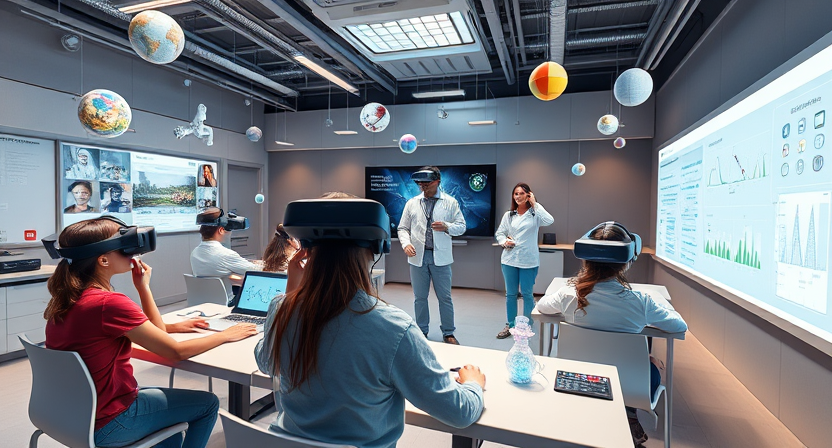Overview of Immersive Technologies

Immersive technologies have revolutionized the way we interact with digital content, creating immersive experiences that blur the lines between the physical and virtual worlds. By leveraging cutting-edge technology such as virtual reality (VR), augmented reality (AR), and mixed reality (MR), users are transported to new and exciting environments where they can engage with content in a more interactive and engaging manner.
These immersive technologies have found applications across various industries, from entertainment and gaming to healthcare and education. Through the use of advanced hardware and software components, immersive experiences are becoming more realistic and engaging, offering users a truly immersive and captivating experience like never before. As these technologies continue to evolve, the possibilities for their applications are limitless, promising to reshape the way we perceive and interact with the digital world.
The Evolution of Virtual Reality
Virtual reality (VR) has come a long way since its inception, with roots tracing back to early attempts at creating immersive experiences in the 1950s. The term “virtual reality” itself was coined in the 1980s, marking the beginning of a more focused exploration into creating computer-simulated environments that could transport users to new digital worlds.
Initially, VR technology was bulky, expensive, and limited in its capabilities. However, with advancements in computing power, graphics rendering, and motion tracking, VR has evolved into a more accessible and realistic form of entertainment and simulation. Today, virtual reality headsets and experiences offer an unprecedented level of immersion, allowing users to interact with and explore virtual environments in ways that were once unimaginable.
Understanding Augmented Reality
Augmented Reality (AR) is a technology that overlays digital information, such as images, videos, or text, onto the physical world in real-time. Through the use of devices like smartphones, tablets, and AR glasses, users can experience a blended environment where virtual elements seamlessly integrate with the real world. AR enhances the user’s perception and interaction with their surroundings by providing additional context, data, or visual enhancements.
One of the key aspects of AR is its ability to superimpose digital content onto real-world objects, creating an interactive and immersive experience for users. This technology can be applied across various industries, including education, healthcare, retail, and entertainment, offering innovative solutions to enhance customer engagement, learning experiences, and operational efficiencies. As AR continues to evolve and become more mainstream, its potential to transform how we interact with the world around us is becoming increasingly evident.
The Rise of Mixed Reality
Mixed reality (MR) is a cutting-edge technology that merges elements of both virtual reality (VR) and augmented reality (AR) to create a seamless blend of physical and digital worlds. Unlike VR, which immerses users entirely in a digital environment, and AR, which overlays digital content onto the real world, MR allows users to interact with both real and virtual objects simultaneously. This innovative approach opens up a wealth of possibilities across various industries, from gaming and entertainment to healthcare and education, revolutionizing the way we perceive and interact with our surroundings.
One of the key advantages of mixed reality is its ability to enhance user experiences by providing a deeper level of immersion and interaction. By seamlessly integrating virtual elements into the real world, MR applications can offer users a more engaging and personalized experience. This immersive technology has the potential to transform the way we work, play, and learn, opening up new opportunities for innovation and creativity. As mixed reality continues to evolve and improve, we can expect to see even more exciting developments in the field, pushing the boundaries of what is possible in the realm of immersive experiences.
Key Components of Immersive Experiences
Immersive experiences rely on several key components to create a sense of presence and engagement for users. One crucial element is high-quality content, whether it’s in the form of realistic graphics, compelling storytelling, or interactive elements that draw users into the virtual environment. This content serves as the foundation that immerses users in a different world or scenario, allowing them to suspend disbelief and fully engage with their surroundings.
Another essential component is the hardware and software that power immersive technologies. From VR headsets and haptic feedback devices to AR-enabled smartphones and MR glasses, the right tools are necessary to deliver an immersive experience. These technologies work together seamlessly to track movements, render realistic visuals, and provide sensory feedback, enhancing the overall immersion and making the experience as authentic and impactful as possible.
Applications of Immersive Technologies in Retail

Immersive technologies are revolutionizing the retail industry by enhancing the overall shopping experience for customers. Virtual reality (VR) and augmented reality (AR) are being used to create interactive and engaging shopping environments, allowing customers to visualize products in a more realistic way. Through VR headsets or AR applications on smartphones, shoppers can virtually try on clothing, test out furniture placement in their homes, or even see how a new paint color would look on their walls.
Furthermore, retailers are utilizing immersive technologies to bridge the gap between online and physical stores. By offering virtual store tours or creating virtual showrooms, customers can explore products in a digital space before making a purchase decision. This not only increases customer engagement but also helps in driving sales through a more personalized and interactive shopping experience.
Immersive Technologies in Healthcare
Immersive technologies have started to revolutionize the healthcare industry by enhancing medical training, patient care, and even therapy. Through virtual reality (VR) and augmented reality (AR) applications, medical professionals can simulate complex surgeries or practice challenging procedures in a risk-free environment, leading to improved skills and precision in real-life settings. Patients, on the other hand, can benefit from immersive experiences that help reduce anxiety and pain during treatments, creating a more comfortable and engaging healthcare journey.
Furthermore, immersive technologies are being utilized in patient education and rehabilitation programs, offering interactive experiences that facilitate learning and physical recovery. By immersing individuals in virtual environments that mimic real-life scenarios or exercises, healthcare providers can personalize treatment plans, monitor progress more effectively, and ultimately enhance the overall patient experience. As the integration of immersive technologies continues to advance, the potential for improving healthcare outcomes and transforming the patient-provider relationship is becoming increasingly promising.
Immersive Technologies in Education
Immersive technologies have revolutionized the field of education by offering engaging and interactive learning experiences. Virtual reality (VR) and augmented reality (AR) tools enable students to explore complex concepts in a visual and immersive manner, making learning more enjoyable and effective. By simulating real-world scenarios, students can actively participate in their learning process, leading to better retention and understanding of the subject matter.
Furthermore, immersive technologies in education have the potential to cater to different learning styles, allowing for personalized and adaptive learning experiences. Through virtual simulations and interactive applications, students can engage in hands-on activities that enhance their critical thinking and problem-solving skills. Educators can leverage these technologies to create dynamic lessons that capture students’ attention and foster a deeper connection with the material being taught.
The Impact of Immersive Technologies in Training and Simulation
Immersive technologies have revolutionized the way training and simulation are conducted across various industries. By providing realistic and interactive environments, these technologies offer a more engaging and effective learning experience for trainees. Virtual reality (VR) and augmented reality (AR) simulations allow users to practice complex tasks in a safe and controlled setting, leading to improved retention and skill development.
Moreover, immersive technologies have the potential to reduce training costs and time by enabling remote and on-demand learning. Simulations in virtual environments can simulate real-world scenarios, allowing trainees to hone their skills without the need for physical resources or supervision. This flexibility not only enhances the learning experience but also increases the scalability of training programs, making them accessible to a wider audience.
Immersive Technologies in Entertainment and Gaming
The entertainment industry has witnessed a remarkable transformation with the integration of immersive technologies. Virtual reality (VR) and augmented reality (AR) have revolutionized the way people experience entertainment content, offering a more engaging and interactive experience. In gaming, VR headsets have immersed players in captivating virtual worlds, allowing them to be fully engrossed in the gameplay like never before.
With the advancement of mixed reality (MR), the boundaries between the physical and digital worlds have blurred, creating new possibilities for entertainment experiences. Mixed reality enables users to interact with virtual objects in their real environment, enhancing the overall immersion and making gaming experiences more dynamic and interactive. The integration of immersive technologies in entertainment and gaming is shaping a new era of experiences that are more realistic, engaging, and captivating for audiences worldwide.
Challenges in Implementing Immersive Technologies

Implementing immersive technologies comes with its set of challenges that organizations need to navigate. One major hurdle is the high cost associated with developing and deploying immersive experiences. From hardware to software, the investment required can be significant, especially for smaller businesses or institutions with limited budgets. Additionally, the rapid pace of technological advancements in the immersive space means that organizations must continually invest resources to stay current and competitive.
Another challenge lies in the complex nature of integrating immersive technologies with existing systems and processes. Ensuring compatibility and seamless interactions between these emerging technologies and legacy systems can be a daunting task. Moreover, the learning curve for staff to adapt to new immersive tools and platforms can be steep, requiring comprehensive training programs to maximize the potential benefits of these technologies. Overall, overcoming these challenges demands strategic planning, financial commitment, and a willingness to adapt to the evolving landscape of immersive technologies.
The Future of Immersive Technologies
Immersive technologies are rapidly advancing, setting the stage for a future where virtual, augmented, and mixed reality experiences seamlessly blend into our daily lives. Innovations in hardware and software are driving the evolution of immersive technologies, making them more accessible and user-friendly. As we look ahead, the integration of artificial intelligence, haptic feedback, and spatial computing will further enhance the immersive experiences, pushing the boundaries of what is possible.
The future of immersive technologies holds promise across various industries, from healthcare and education to entertainment and marketing. As these technologies continue to mature, we can expect to see more personalized and interactive experiences that cater to individual preferences and needs. With the ongoing developments in 5G networks and Internet of Things (IoT), the future of immersive technologies is poised to revolutionize how we interact with the digital world, opening up new opportunities for creativity, collaboration, and engagement.
How Immersive Technologies are Changing Communication
Immersive technologies have revolutionized the way we communicate, breaking barriers of distance and time. Through virtual reality (VR) and augmented reality (AR), individuals can engage in immersive experiences that simulate face-to-face interactions, fostering a sense of presence and connection. These technologies allow for real-time collaboration and engagement in a virtual space, enabling more interactive and impactful communication.
Furthermore, immersive technologies provide a platform for enhanced storytelling and content delivery, creating more engaging and memorable communication experiences. By incorporating elements of interactivity and immersion, communication becomes more dynamic and compelling, capturing the attention and interest of the audience. As these technologies continue to evolve, they are reshaping the way we convey information and connect with others, ushering in a new era of communication that is both experiential and transformative.
Immersive Technologies in Architecture and Design
Architecture and design have been significantly transformed by the integration of immersive technologies. Designers can now immerse themselves in virtual environments, allowing for a more intuitive exploration of structures and spaces before they are physically constructed. This immersive experience enables architects to visualize their designs in a more realistic manner, making adjustments and improvements with greater accuracy and efficiency.
Furthermore, immersive technologies have revolutionized the way clients interact with architectural proposals. By immersing clients in virtual environments, architects can provide a more engaging and interactive experience, allowing clients to fully experience and understand the proposed designs. This not only enhances communication between architects and clients but also helps in ensuring that the final product meets the client’s expectations and requirements.
The Role of Immersive Technologies in Marketing
Immersive technologies have revolutionized the realm of marketing by offering interactive and engaging experiences to consumers. Through virtual reality (VR) and augmented reality (AR) applications, businesses can showcase products and services in a more captivating and memorable way. By allowing customers to visualize products in a virtual space or try them out through AR overlays, companies can enhance the overall shopping experience and drive purchase decisions.
Moreover, immersive technologies in marketing enable brands to create personalized and targeted campaigns that resonate with their target audience on a deeper level. By leveraging data analytics and user behavior insights, businesses can deliver tailored content and advertisements through immersive channels, leading to higher engagement and conversion rates. This shift towards immersive marketing not only increases brand awareness but also fosters stronger connections between consumers and brands, ultimately driving long-term customer loyalty.
Immersive Technologies in Travel and Tourism

In the realm of travel and tourism, immersive technologies are revolutionizing how people experience destinations and attractions. Through virtual reality (VR) and augmented reality (AR), travelers can embark on virtual tours of faraway places, wander through historical sites, and immerse themselves in cultural celebrations without leaving their homes. These technologies offer a glimpse into the world of travel before even booking a ticket, allowing for more informed decision-making and personalized experiences.
Furthermore, immersive technologies enhance the overall travel experience by providing interactive maps, real-time informational guides, and language translation tools. With the use of AR applications on smartphones or wearable devices, travelers can navigate unfamiliar locations with ease, access detailed information about landmarks and points of interest, and engage with local communities in a more meaningful way. By seamlessly integrating technology with the physical world, immersive experiences in travel and tourism are shaping a new era of exploration and discovery for adventurers and wanderers alike.
Ethical Considerations in Immersive Experiences
Privacy concerns are at the forefront of ethical considerations in immersive experiences. As these technologies collect vast amounts of user data, questions arise regarding data security, consent, and potential misuse. Users need assurance that their personal information is safeguarded and that they have control over how it is utilized within immersive environments.
Another ethical issue relates to the potential for addiction and escapism in immersive technologies. With the ability to create highly engaging and immersive worlds, there is a risk that users may become overly reliant on these experiences, leading to neglect of real-world responsibilities and relationships. Balancing the captivating nature of immersive technologies with responsible usage and awareness of their impact on mental well-being is crucial in navigating these ethical considerations.
Immersive Technologies in Sports and Fitness
Immersive technologies have rapidly transformed the landscape of sports and fitness experiences. Athletes and fitness enthusiasts can now engage in virtual training sessions, allowing for more personalized workouts tailored to specific goals and needs. Virtual reality (VR) simulations are being utilized to enhance athletes’ performance, providing real-time feedback on technique and strategy, ultimately leading to improved results on the field or in the gym.
Moreover, augmented reality (AR) is being integrated into sports and fitness equipment, offering users interactive experiences that blend the physical and digital worlds seamlessly. From AR-enabled sports gear tracking performance metrics to fitness apps overlaying workout instructions in real-time, the possibilities for enhancing engagement and motivation in sports and fitness activities are expanding rapidly. The immersive nature of these technologies not only makes training sessions more engaging but also opens up new avenues for individuals to challenge themselves and achieve their fitness goals.
The Influence of Immersive Technologies on Social Interaction
Immersive technologies have revolutionized the way people interact and communicate in the digital age. With the integration of virtual reality, augmented reality, and mixed reality into various social platforms and applications, individuals are now able to connect with others in more meaningful and engaging ways. These technologies have the power to break down physical barriers and create shared virtual spaces where users can interact, collaborate, and socialize as if they were in the same room.
Furthermore, immersive technologies have the potential to enhance empathy and emotional connections in social interactions. By allowing users to experience different perspectives and realities through immersive experiences, individuals can better understand and relate to others’ feelings and experiences. This increased sense of empathy can lead to more authentic and impactful interactions, fostering deeper connections and understanding among individuals in a virtual environment.
Conclusion: Embracing the Future of Immersive Experiences
Immersive technologies have undeniably transformed various industries, offering new ways to engage, learn, and interact. As we look ahead to the future, it is clear that these technologies will continue to play a significant role in shaping our digital landscape. Embracing immersive experiences means embracing innovation, creativity, and the endless possibilities that come with them.
From virtual reality in healthcare to augmented reality in education, the potential for immersive technologies to revolutionize how we work, play, and connect with others is immense. As businesses, educators, and creators continue to explore and harness the power of immersive technologies, we can expect to see even more groundbreaking applications that enhance our daily lives. By embracing the future of immersive experiences, we are not just embracing a new way of experiencing the world, but also opening the doors to endless opportunities for exploration and growth.




